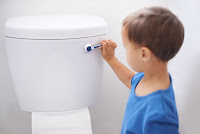"Help me to Communicate by Myself"
THE DEVELOPMENT OF LANGUAGE:
"Help Me to Communicate by Myself"

“The time in which the mind has many ideas which it would like to communicate to others, but cannot express them for lack of language, is a very dramatic one in the child’s life, and brings him his first disappointments.”
Thus it is important for us as parents and adults, to be attuned to the needs of the child as she tries to satisfy this urge to communicate and provide the necessary opportunities for her to do so. The need to communicate is apparent in young children from birth—we see newborns turn toward the sound of the mother’s voice or react when they hear a story or piece of music that they listened to while in utero. Montessori highlighted the fact that young children are in what she called ‘a sensitive period for language’ which peaks around 2 years old. She notes that,
“At four months the baby becomes aware that this mysterious music which surrounds him and touches him so deeply, comes from the human mouth….It is not merely music. When we talk to him fondly, the baby realizes that these words are meant for him, and he begins to grasp that we are saying them intentionally.”
The role that the adult plays in aiding the development of communication is an essential one. It is the adults in the child’s environment who model communication and the language that the child hears spoken in the environment enables the child to develop his own ability to communicate. As parents, we need to be mindful that the child needs to be given the freedom to communicate as well as the opportunity. From birth, babies are able to distinguish phonemes in the speech they hear around them. The newborn is attracted to the sound of the mother’s voice and cries to communicate. It is important that the adult responds to the cries of the newborn and that mom and dad spend time just talking to the baby.
The Role of the Adult
As the adults in the child's life, whether we are parents, grandparents or simply caregivers, we must remember to give her the freedom to communicate. That means we provide the time and opportunity for her to share her thoughts with us. And we need to make sure that we are demonstrating active listening as we engage with her. We also need to give her the tools for effective communication, how to listen, how to respond, etc. In addition, we need to ensure that she has opportunities for the enrichment of her vocabulary--helping her acquire the names of all the fascinating objects in the environment, parts of the body, foods, sensations and feelings, and so on.
When we model the appropriate methods of communication, she learns how to do so as well. Remember, children learn what they see; so what she sees you doing, is what she will do. We need to remember that she is absorbing all aspects of communication from birth and that the foundation for the child’s language is laid in the first years of life. So we want to make sure that we give her all the best that language has to offer as well as model the use of the appropriate tools and skills that she will need as she grows.
Rhonda Lucas-Sabater is an AMI Auxiliary Trainer at the Primary (3-6) level. She is the mother of five Montessori children and the co-founder of a public charter Montessori school in Washington, DC. She is also AMI trained at the Assistants to Infancy (O-3), Primary (3-6), and Elementary (6-12) levels and is an AMI certified Adolescent guide.

